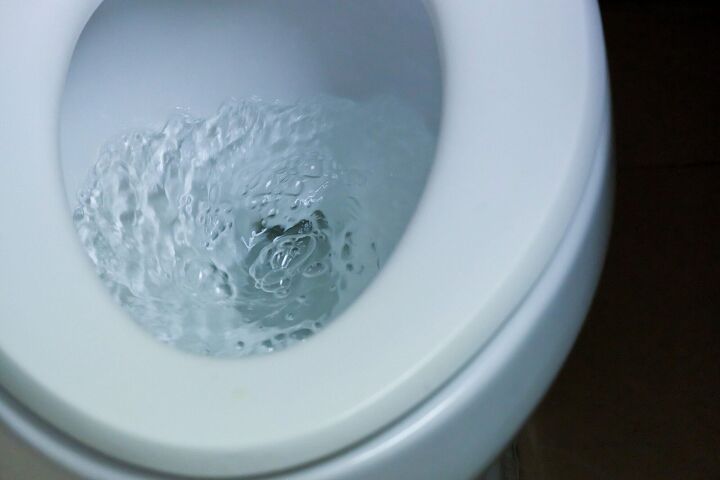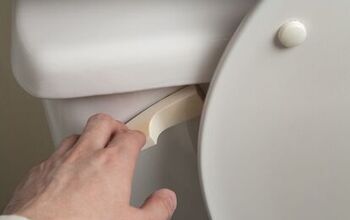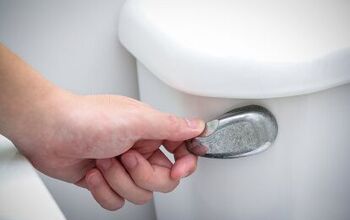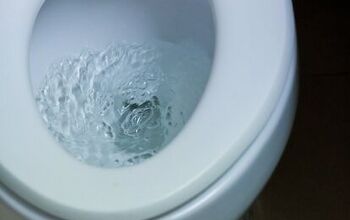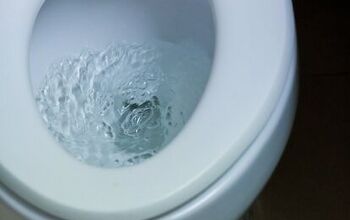Can You Flush Milk Down The Toilet? (Find Out Now!)

Got milk? Here’s what you shouldn’t do with it. Disposing of soiled milk probably seems like a straightforward process. If you’re like many other people, your immediate thought is to dump it down the drain or flush it down the toilet, right? Wrong!
Flushing milk and any other dairy products down the toilet is never advisable because these substances can have an instant negative impact the environment and clog and ruin your plumbing system over time, too. This can lead to expensive plumbing repairs and an upset ecosystem.
You may think this is absurd because milk is a liquid, but it’s the truth, nevertheless. Let’s take a deeper dive into the topic, so you can better understand what it really means to flush milk down the drain.
Do You Need to Hire a Plumber?
Get free, zero-commitment quotes from pro contractors near you.

Why You Should Never Flush Milk Down the Toilet
In almost every case, you are not going to be pouring good milk down the toilet. That said, we’ll be referencing spoiled or sour milk for the sake of this article. As we’ve said, milk is bad for your pipes, and it’s bad for the environment as a whole. Both of these issues are due to its composition, which makes it very difficult to break down. Here’s what expired milk does to…
The Environment
Milk has a very high oxygen demand, which can be detrimental to ecosystems that are not used to dealing with it. The bacteria that feed off the expired milk quickly use up that oxygen, which then takes it away from other organisms in the environment. This translates into fish and other small organisms essentially suffocating over time.
Your Plumbing System
Expired milk has an incredibly high-fat content, which is not good news for your pipes. Once flushed, the substance will cool in the sewer. There, it will solidify and stick the walls of your pipes. Over time, it can collect other debris that gets flushed and will cause a massive clog.
Depending on the severity of the clog, you can try a handful of things to resolve the issue. These include…
- Plunging the toilet with a high-grade toilet plunger.
- Snaking the drain to break up the blog or pull it back out through the bowl.
- Flushing ¼ cup baking soda, ¼ cup vinegar, and ½ gallon of hot water down the drain.
- Pouring a mixture of hot water and ½ cup Dawn dish soap down the drain.
- Calling a professional plumber to fix the issue once and for all.
Alternative Uses for Spoiled Milk
Pouring spoiled milk down the drain seems like the most intuitive solution, so you may be at a loss now for what you actually should do with it. Luckily, there are many alternatives for disposing expired milk that won’t hurt your plumbing or the planet.
Baking and Cooking
While spoiled milk can be dangerous to ingest on its own, it is a very helpful ingredient for many recipes. In fact, it can ultimately replace milk, buttermilk, sour cream, or yogurt when making things like cornbread, biscuits, pancakes, and more. Additionally, a splash of spoiled milk is great for thickening soups and stews.
Furthermore, you can use expired milk to make creamy salad dressings like bleu cheese, Caesar, and ranch. It’s also great for making cottage cheese from scratch. One final use for spoiled milk in the kitchen is to tenderize meat, fish, and uncooked whole grains. As you can see, its uses are endless!
Spicing Up Pet Food
Though we may hate the sour taste of bad milk, many animals don’t. Mixing a small amount of spoiled milk in with your pet’s food can actually add a boost of calcium and protein into their diets. However, this should be done in moderation as too much of this rich substance can upset their stomach. You should also make sure your pet isn’t lactose intolerant before you try this. Otherwise, even a little bit will make them sick.
Feeding Plants
Once diluted with water, expired milk is great for watering plants. The calcium in the milk is great for supporting cell walls and healthy enzyme activity. Be sure to mix even amounts of water and milk for best results. Then you can either pour or spray the mixture on your plants. When it comes to outdoor plants, this mixture can also prevent powdery mildew from growing.
Adding to Your Skin Care Regiment
Weirdly enough, spoiled milk is actually great for enhancing your skin. Milk contains lactic acid, which can make your skin smooth and firm. Simply dilute it with some water and rub it into your skin. Then, rinse your face with plain water to avoid smelling like bad milk all day.
If you’re planning to make homemade face masks or add spoiled milk to a bath, you can also mix it with essential oils and other scents to completely mask that sour smell.
Disposing Through an APB Contractor
If you truly don’t want to hang on to your spoiled milk, don’t stress. There is a way to get rid of it without damaging the pipes or entire ecosystems.
APB (Animal By-Product) Contractors properly dispose of harmful waste, so it does not negatively impact the environment. Milk is grouped under Category 3, which means it is a high pollutant.
This is generally a more typical disposal method for commercial farms, but many states do also have programs for households, too. Check with your local municipality for more information.
Sour Milk & Your Septic Tank
Technically, sour milk is good for your septic system as the bacteria creates a symbiotic relationship with the yeast that naturally exists in the septic system. However, it is not an ideal choice due to the negative environmental impact and the high fat content, which can eventually clog your pipes.
Luckily, there is an alternative to flushing milk down the drain that is healthier for your septic system, pipes, and the environment. First, flush ½ cup dry baking yeast. Then, follow it up with ¼ cup instant yeast every 4 months from then on.
Related Questions
Is there a difference between spoiled and sour milk?
Yes, though the terms are often used interchangeably. Spoiled milk usually is referring to pasteurized milk that has gone bad. Sour milk refers to raw milk that has started fermenting. Both can be used for all the alternative uses listed above.
How can you tell if milk is spoiled?
There are a few ways to tell if your milk has gone bad. For starters, it will have a very distinct—and awful—sour smell. It may also take on a slightly yellow color and lumpy texture. If you don’t notice any of those aspects off the bat, the sour taste will definitely throw you off.
What else can easily clog your toilet?
Generally speaking, the only things should be flushed down your toilet are pee, poo, puke, and toilet paper. Some foreign objects that should never be flushed include condoms, baby wipes, gum, hair, paper towel, and more. You also should not flush ticks down the toilet, but for different reasons.
Do You Need to Hire a Plumber?
Get free, zero-commitment quotes from pro contractors near you.

Final Thoughts
There are a select few things that should go down your toilet, and milk is not one of them. Over time, milk and other dairy products can clog the drain, cause your toilet to flush slowly, and eventually make it not work at all. Plus, it can destroy ecosystems due to its high oxygen needs and bacteria growth. Fortunately, there are so many other things you can do with spoiled milk. That said, get creative instead!

I am a copywriter and editor based in the Las Vegas area with nearly a decade of experience under my belt writing landing pages, cost guides, blog posts, newsletters, case studies, and social media content. I have a degree in Strategic Communication and experience working in both the account and creative spheres. My goal is to always be discovering new interests and bettering myself as a writer and editor along the way.
More by Kerry Souder



